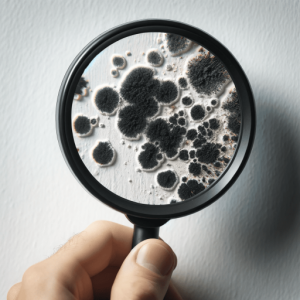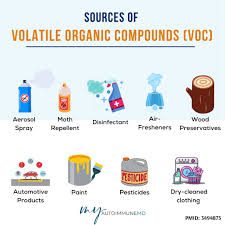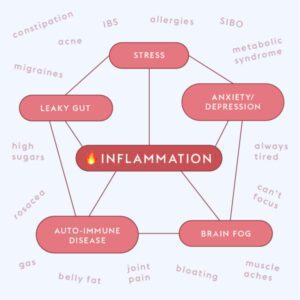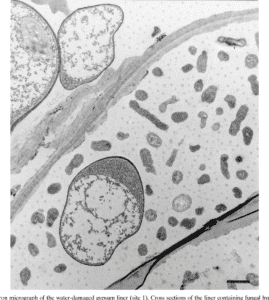Symptoms where an outbreak of allergic respiratory disease occurred in a new building that was characterized from initial occupancy by the presence of extensive visible mould (especially Aspergillus versicolor) on interior surfaces, included 27% of staff reporting headaches. The building was remediated and Symptom rates just before building re-entry were substantially lower than those found before evacuation and have remained unchanged after re-occupancy was completed. This suggests that exposure to the organisms that had been removed showed a correlation between headaches and the Aspergillus versicolor organism which had contaminated the building. ( Applied Occupational and Environmental Hygiene Volume 16, Issue 3, 2001 )
Airborne fungi have been postulated as a cause of U002 symptoms among office workers. Using the MAST chemiluminescent system, this study evaluated 36 IgG and 36 IgE antibody levels in 47 office workers from an area with elevated airborne fungal concentrations and 44 office workers from an otherwise similar area with lower airborne fungal exposure. Those workers with symptoms which included headache, fatigue, stuffy nose, irritated eyes, or sore throat were more likely to have one positive IgE antibody test.( Environmental Research Volume 76, Issue 2, February 1998, Pages 85-93
Headaches and migraines are poorly understood by the academic medical community. Doctors prescribe many pain relievers, but can’t tell you why you suffer from headaches(Candida albicans (yeast), Headaches and Migraines by Bruce Semon, M.D., Ph.D. (read more)
We know that the blood vessels are affected in some way.
In migraine, for example, the vessels swell up, leading to pain, and to the compounds which constrict the vessels.
You can prevent these headaches by treating yeast inside your body, both by taking an anti-yeast medication called nystatin and changing your diet.
How can this be?
The yeast Candida Albicans is a normal resident inside of the intestinal tract. This yeast can also be found at times in the mouth. Sometimes this yeast overgrows and the doctor recognizes this overgrowth of yeast as a yeast infection as thrush.
The yeast Candida albicans makes many chemicals which are toxic to the brain. These chemicals include toxic alcohols, aldehydes as well as the powerful brain poison hydrogen sulfide. Yeast and fungus are also present in the food. For example, vinegar is spoiled wine. Wine is made by yeast and many yeast chemicals are present in vinegar. Malt is made by sprouting barley and then heating it. The resulting malt is sold as a sugar substitute and is baked into many products. Malt also contains many chemicals which affect the brain.
The chemicals in malt which are made by yeast all slow the brain down. Thus the body tries to prevent these chemicals from ever getting to the brain.
Fungi also make chemicals which are toxic to the brain. I have found from clinical experience that foods contaminated by yeast or fungus, for example, peanuts, or foods in which yeast has been present, such as vinegar, are all headache causers.
Why might these chemicals cause headaches?
Most of these chemicals should be cleared by the liver but not all are. No one knows exactly what these chemicals do when they get to the blood vessels of the brain.
I propose the following explanation. One way to prevent such chemicals from passing through the cells of the blood vessels is for these blood vessels to swell up in an inflammatory response. Then perhaps the chemicals will stay in the cells lining the blood vessels rather than getting into the brain. The result will be pain but the brain will be protected.
I have treated many people for headaches and migraines. I have found that the best solution is to avoid foods containing chemicals made by yeast and fungus which are toxic to the brain.
The first foods to eliminate are vinegar, malt, chocolate, pickled foods alcoholic beverages, non-alcoholic beer, peanuts, soy sauce, Worcestershire sauce, and cottonseed oil.
There are many more foods, and treatment with the anti-yeast medication nystatin also helps. Nystatin is not absorbed and has no significant side effects.
The diet for Candida problems consists of removing fermented foods from the diet. The worst offenders are alcoholic beverages and non-alcoholic beer, vinegar, barley malt, chocolate, pickles, and aged cheese. I explain the diet very thoroughly, including how to implement the diet for children, in An Extraordinary Power to Heal and Feast Without Yeast
One of the symptoms of mould exposure is a headache but interesting is the fact that there are some fungal components which have been used to treat cluster headaches in Microbiology 2009 the following was presented “Fungi known to cure headaches come from the phylum psilocybe. These are also known as magic mushrooms. They contain psilocybin, a hallucinogenic chemical. Scientists believe that the reason it helps with headaches is because this is a chemical that is similar to serotonin, a neurotransmitter. It is not known if this is the true reason and how it works. Studies do show that these mushrooms have positive effects on cluster headaches, headaches that occur periodically. 85% of the subjects experienced at least one immediate relief. 95% of the subjects experienced a longer duration between their next attack.”
But magic mushrooms produce a chemical which has been presented as LSD so trying that we would suggest would not be the wisest route to take, the ergot alkaloids produced by fungi also can kill other fungal organisms, this area has not been studied very well to date.




